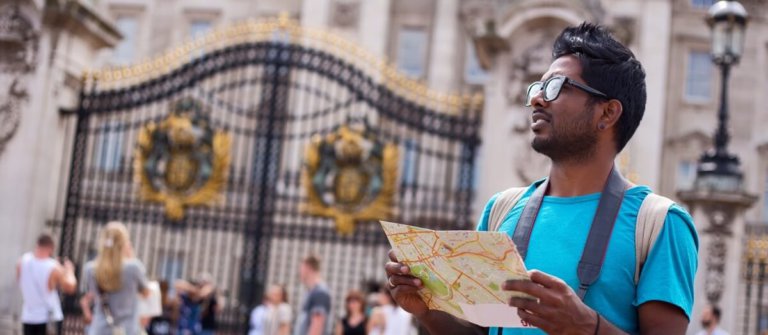
Every year, Indian students tend to make up the second-largest group of international students in major English-speaking host countries. From the US to Australia, New Zealand to Canada, they are second only to China when it comes to overseas study.
While we often read about them from this perspective, digging deeper into the data shows how this demographic is changing.
Looking into recently published data and news reports, these are the main takeaways from prospective Indian international students’ study abroad plans.
1. Indians used to make up the biggest group of international students in the US as recently as 2009
With the brouhaha between Trump and Huawei, you’d be forgiven for thinking China has always sent the largest number of citizens to study in the US. While this may be the case today, it wasn’t so until 2010. Before that, India was the top source country for international students at US colleges and universities. Since then, the Indian contingent has steadily grown 90 percent from 103,260 in 2008-09 to 196,271 in 2017-18, according to IIE Open Doors data.
2. Indian students now favour Canada over the US

Canada’s surge in popularity is likely due to its more liberal post-study work rights for international students. Source: Shutterstock
The US used to attract the most interest among Indian students on the Hotcourses platform. Now – possibly discouraged by the increasing obstacles to obtain the H-1B temporary work visa and inflammatory immigration policies – they’re turning their interest to Canada instead. Last year, interest in the US among the 705,000 Indian students using the Hotcourses platform fell from 15.8 percent to 12.2 percent. Interest in Canada grew from 30.7 percent to 33.7 percent.
Not all is hunky-dory in Canada, however. A report by The Globe and Mail found that students feel they have been misinformed by agents regarding the better post-study work rights in Canada. One student, Gurpreet Kaur, is enrolling in a second programme at the private Sprott Shaw College, where she has already graduated from the early-childhood education programme months ago.
“If I got a full-time job, I would just quit the school,” said Ms. Kaur, whose parents have spent US$37,500 on her tuition.
“Most [employers] say they can’t really help me,” she said, in tears, adding that employers either don’t need anyone or don’t want to deal with the immigration paperwork to sponsor her.
3. More female Indian students want to study in the US
Of those still keen to study in the US, the cohort is increasingly female, according to Hotcourses data between June 2018 to June 2019. They are still “overwhelmingly” graduate-focused, according to international placement organisation IDP Connect. Mobile devices are growing more popular as the device of choice when researching colleges and universities via mobile devices, making up 61 percent of prospective students on the Hotcourses platform.
4. They’re mostly from rich and highly literate states
-
![]()
Mumbai’s total private wealth held by residents is US$950 billion according to New World Health. Source: Shutterstock
Of the 705,000 Indian students using the Hotcourses platform, 23.5 percent are from Maharashtra, where Mumbai, the 12th-richest city in the world according to New World Wealth, is located. With US$950 billion in total wealth held by all the individuals living in the city, many are more likely to be able to afford the price of a foreign degree, hence the higher interest.
Maharashtra is followed by Tamil Nadu, Telangana and Karnataka, which have some of the highest literacy rates in the country.
5. Young Indian students are skipping New Zealand
Most Indian students showing interest in New Zealand universities are now significantly older than average, according to a global survey of 77,000 prospective international students by Melbourne-based QS Enrolment Solutions.
Of those below 24 years old, only 25 percent registered interest, compared with 50 percent of those enquiring about Australia.
Cost could be the most relevant explanation. Full-cost fees at the doctoral studies level for international students are the same price as domestic students, at approximately NZ$7,000 per year. At undergraduate level, international students pay NZ$33,000 a year.
“The two big factors are the fees and the cost of living in Auckland and the big Australian cities like Sydney and Melbourne,” Indian student Divya Kataria, the AUT Students’ Association’s international officer, told NZ Herald.
Liked this? Then you’ll love…
The US could cap H-1B work visas for Indians
The elite schools India’s rich and famous send their kids to








